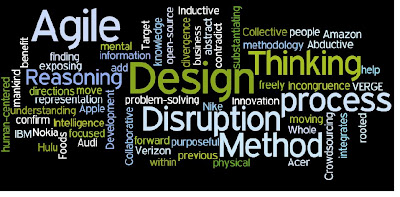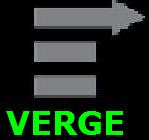 This is a more in-depth explanation of our introduction to Agile Disruption Method from a previous post.
This is a more in-depth explanation of our introduction to Agile Disruption Method from a previous post.Agile Disruption Method is an adaptation of the Design Thinking "process". Design Thinking is an innovation method made popular by Tim Brown of Ideo, that encourages people to question problems from the perspective of what is feasible, viable and commercially desired. Agile Disruption Method encourages people to discover innovation by repetitively "disrupting" their own conclusions at every step of the process, irregardless of where they are in the process. Moreover, Agile Disruption Method is a collaborative way to maximize the value proposition of a product or service through continuous analysis and observation of the effect they have on humans; not through statistical data alone but also with the real life experiences of people.
The principles of Design Thinking, human desirability, feasibility and viability are shared by Agile Disruption Method. However, the goal of Agile Disruption isn't to find conclusions; on the contrary, Agile Disruption Method is the process of antagonistic query and contradictory discovery. To accomplish this goal one must think. Thinking, believe it or not is rarely used when a company decides to embrace innovation (consumer value based problem-solving). Thinking by definition is an internal mental process that uses data or information as input; integrates that information into previously learned material which is used to further ones knowledge, understanding and perception of reality. Thinking, which is inherently perpetual, either confirms or contradicts the known. Understanding this lead us to a theoretical definition of the influence thinking has on Design Thinking and consequently Agile Disruption Method:
"A Design Thinker and consequently by default, an Agile Disrupter, is one who purposefully seeks to challenge and disprove their own perceptions in order to increase the efficiency of the internal mental process, thus increasing by which they expand their knowledge and understanding. This in turn maximizes the value and future profitability of their innovations."
As a company we had issues with meeting the checkpoints of the Design Thinking process and found ourselves continuously "disrupting" conclusions at various points in the process that we were dead set on within hours of making them. We quickly found that by dispersing those checkpoints within a circle of skilled individuals, we were able to locate the bugs in our conclusions much quicker, as well as discover ways to accomplish what we previously considered impossible. Agile Disruption is now being used to find profitable solutions by first considering the remarkably impossible through collaboration.
Agile Disruption may not make much sense at this point. However, stay tuned for our next post which will demonstrate how the process works and why it is an important component to the Design Thinking process. If you think you can offer something to help us refine our method, please comment or send us an email.

No comments:
Post a Comment